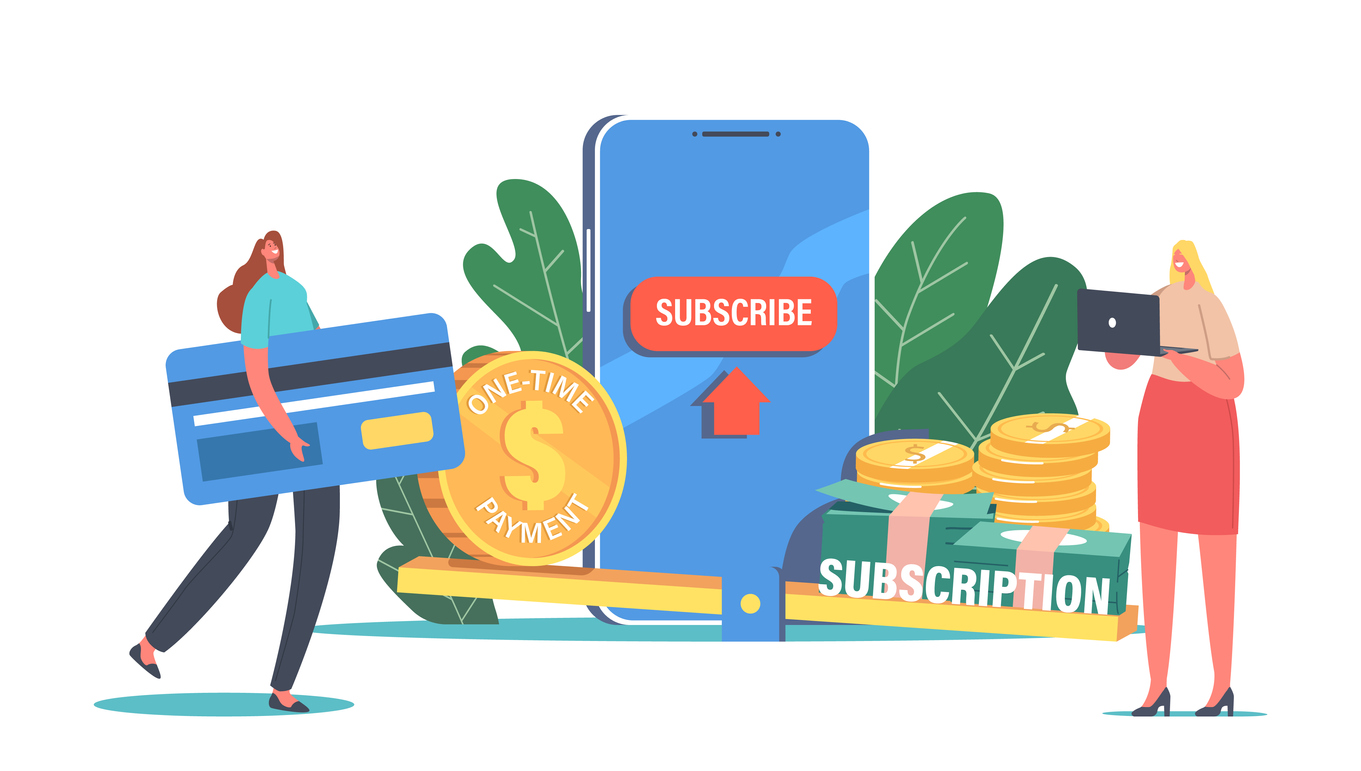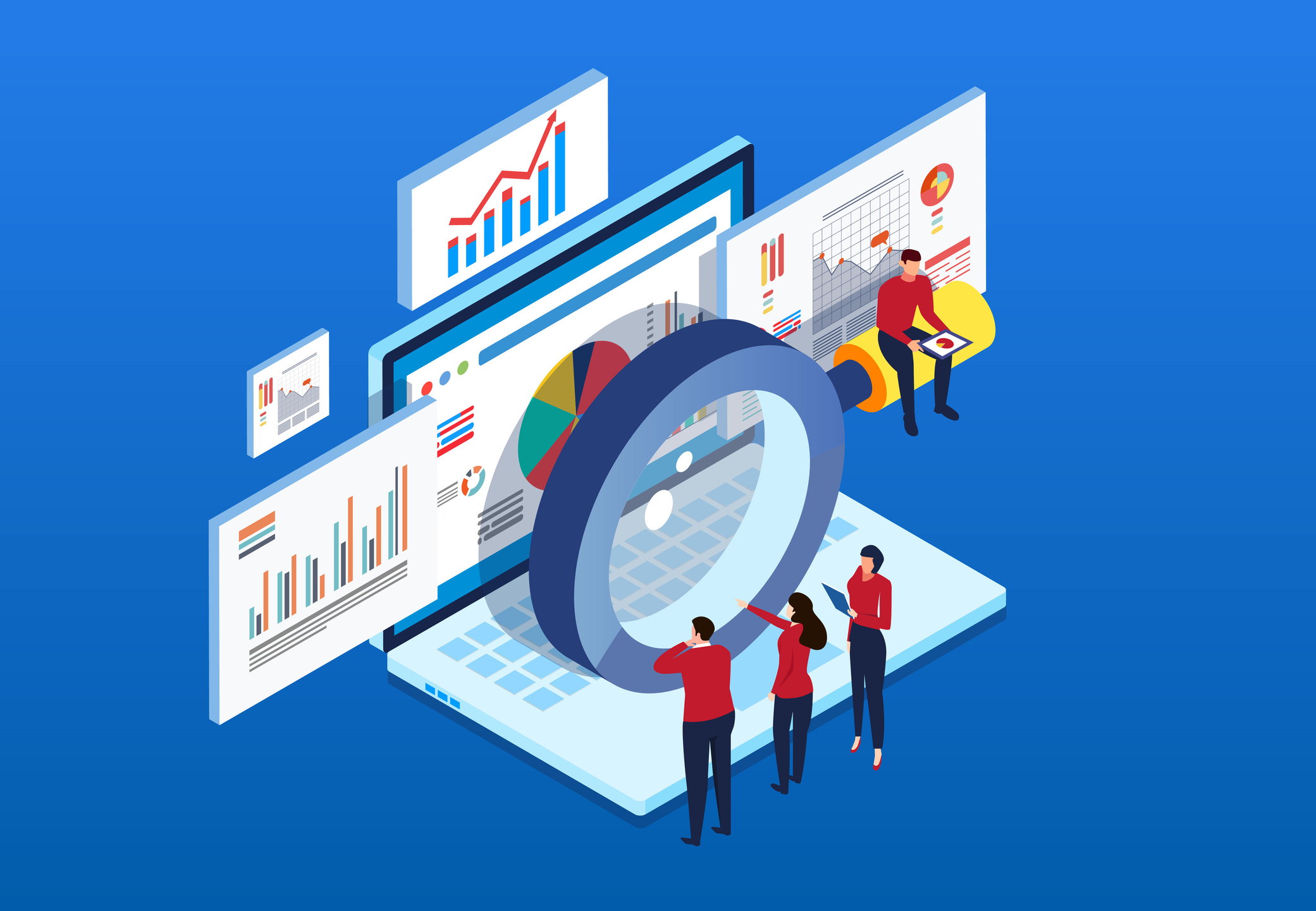BIG NEWS! TikTok is testing paid subscription for creators? What does it mean for businesses?
Continue readingHow Marketers Can Adapt to Big Tech Privacy Regulations
Social Media Users Are Demanding Privacy – And Business Marketing Efforts May Need A New Direction
Before the age of social media, confidentiality breaches were limited to what was known as the rumor mill. Word of mouth could definitely spread information that you never intended to get out (and it could often happen quicker than you ever thought possible)! But now, with social media, smart phones, and online platforms a part of everyday life, privacy is a bigger concern than ever before. Since the advent of social media, and the subsequent explosion of new platforms, apps, and online marketing efforts, concerns of user privacy have been cropping up for many years, and rightly so. Many big-name companies are now making it a top priority to adjust privacy settings to protect user data and other confidential information so that it doesn’t get into the wrong hands – and without the consent of the user.
Even something as simple as “liking” a post on social media sends algorithms into overdrive, which then begin to formulate a plan based on your interests, hobbies, and personal preferences. Often clicking on a simple image, story, or even a cute picture of something innocent like a puppy gives the online space more information about yourself than you ever intended to share. And then the targeted ads begin.
It’s natural for individuals to be concerned with privacy, and now online platforms and technology giants are doing something about it.
Industry Leaders Are Meeting The Demand For Change
Highly visible tech companies are now leading the charge, and one of the most contentious introductions in recent months has been from everybody’s favorite tech darling, Apple. With the introduction of its latest iPhone update, iOS 14.5, users will now benefit from App Tracking Transparency. Although iPhone users always had the option to opt out of ad tracking to some degree, it has never before been this easy. Now, each company that wants to track user information will need to request permission through a popup window that is impossible for the user to ignore, giving the user complete control over their privacy settings.
Another online giant, Google, has plans to roll out a plan to protect user privacy but it has currently been delayed until 2023. Google has cited the delay as pertaining to their need to find an optimal solution to privacy problems while also minimizing impact to online advertisers.
Of course, platforms like Facebook, Instagram, and Twitter argue that changes like these will sink opportunities that small companies have to create ad campaigns that reach a wide social media audience. And there may not be a straightforward answer that pleases all parties involved.
Two Sides To Every Issue
As a business, you can very likely see both sides of the issue. You yourself have probably experienced unwanted ad targeting, but you also understand that it is an essential part of doing business. And on the other hand, you understand the need and the responsibility you have to protect the privacy of your customers. However, this conundrum often puts traditional marketing efforts under the microscope, and facilitates a new direction.
But the good news is that if your brand is trying to create awareness and online visibility with impactful marketing, you don’t need data from controversial 3rd party methods to give you the results and conversions you need. This is where the impact from a successful influencer marketing partnership can infuse new life into your brand, all without lifting the personal data of your target customers.
Influencer Marketing Is The Perfect Compromise
Influencer marketing is poised to give businesses the ROI they need from their advertising and marketing dollars amid privacy changes that are only going to become more widespread and restrictive as the years go by. By incorporating a solid influencer marketing strategy into your business plan, not only are you reaching customers ethically, you are also able to drill down deep into your outcomes with performance-based analytics, engagement rate statistics, and advanced conversion reporting.
Influencer marketing offers audience engagement with no intermediary, just engaging and creative content that links directly back to your website, building brand visibility intuitively. No shady business practices, just organic conversions that are directly funneled from your chosen influencer right to your brand, website, or sales page. When you align with an influencer within your market niche, your marketing reach is automatically extended to an audience that already has a built-in interest in your products or services.
In a world where businesses may turn to unethical practices to gain a competitive edge, a quality influencer marketing strategy will give your company maximum ROI, along with a reputation as a socially responsible company that values customer privacy.
Performance Metrics to Optimize Social Media Campaigns
How do you know your social media campaign worked?
When aligning your business strategy with an influencer, the benefits can be an immense boost to the success of your business, meaning an increase in sales and higher overall website traffic. But, just how do you know if your influencer marketing campaign was successful? And more importantly, how can you use data-driven metrics to both improve and adapt your campaign measures, and ensure you are receiving an optimal ROI?
There are three main Key Performance Indicators that drive the success of an influencer campaign:
Influencer Post Engagement
Measuring influencer engagement can be trickier than it sounds. It is not simply the number of followers that should be reviewed, nor is it the amount of likes on each post. Yes, these likes are important, and they certainly have their place in a marketing strategy and in building brand visibility, but there is more to the story. To a business, these likes can move into the territory of “vanity metrics” if there is no further engagement beyond clicking the “Like” button (or the love, hug, or laugh emoji!). Engagement rate can be gauged by a combination of likes, shares, retweets, reposts, and comments, but if the end result isn’t a high conversion rate, then a business needs to reevaluate its strategy.
And with Instagram and Facebook testing the waters of allowing users to hide likes, it is more important than ever to build a solid strategy that will move beyond likes – and into high conversion rates.
So, how then does a business that is focused on optimizing conversions measure success across platforms and various marketing channels?
Link Performance
Engagement rate crosses over into providing superior value when a link within a post is actually clicked by the social media user or follower. This drills down further into how well your post was received by your target audience, and the audience of your influencer. By simply embedding a customized clickable link into an influencer’s post, the metrics available to a business start to provide true measurable statistics that can offer significant insight into how a campaign is performing. When an embedded link is clicked by any user, advanced technology allows the link to be tracked and fully analyzed, answering questions in rapid-style format. Who clicked the link, when did they click the link, which page did they click the link from? These metrics are each important pieces of the conversion rate puzzle, and by studying them carefully, businesses can determine which influencer content outperformed expectations, and which posts failed to achieve successful results.
The overall goal with an embedded link is to drive traffic to your website or product page, ultimately resulting in measurable conversions. However, what those conversions should look like for each individual company depends entirely on the goals of each specific campaign.
And Finally, The Ultimate Goal of Conversions
Conversions are built around the concept of understanding buyer behavior, and the best way to do that is to track each stage of the customer journey. You can’t build a campaign around guesswork – you have to use true metrics and analytics that can then be applied to your customer base and intended target audience.
In a perfect world, a high percentage of website visitors would buy your products or services, sign up for your newsletter, register for your seminar, or perform the action that would deem the interaction a successful conversion. However, even though the art of successful conversions is far from perfect, with the right strategy, you’ll be well on your way to exceeding your expected ROI.
You may have heard the term “sales funnel”, and this is basically exactly what it sounds like. It allows marketing teams, or third parties that are managing online campaigns, to track buyer sales or their entire journey from the original source (the post or link that was clicked) all the way through the funnel to an ultimate conversion. The best online marketing companies are able to track exactly where the buyer’s journey ends with specific, measurable analytics. Did your potential customer get as far as the registration form, and then fail to submit it? Did they click on the link within a post, visit the site, and then immediately leave? If there is a pattern in buyer behavior, assuming that it is not an overall site glitch, these metrics will give your business the information needed to identify the point in the process that seems to be providing troublesome data.
Of course, there are different layers to business strategy, and a successful conversion rate will depend on what goal your company is trying to accomplish. Successful conversion rates will vary depending on the end goal, whether it is the purchase of a product, an email list sign up, a registration fee, or any combination of other deliverables. In any case, the important thing is to have a strategy in place to collect the data, metrics, and campaign analytics that will allow you to optimize your conversion rate to a level that works for your company. All of your goals must be taken into account when formulating a business plan to create the intended optimal campaign ROI by applying data metrics from each stage of the end-to-end customer journey. And that is a journey that will, in turn, optimize your journey as a successful business.
Will Businesses “Like” The Policy Of Hiding Likes?
Back in 2019, Instagram began performing tests on a small subset of users to determine the experience of hiding likes on the platform, with the intention of possibly expanding the practice to Facebook. Although nothing significant has changed since the testing began two years ago, what would happen if this practice of hiding likes becomes prevalent on Instagram and Facebook? For personal users, who may just be using these platforms as a way to show off cute pictures of their kids, pets, or vacations, it may be helpful to them to have the option to remove likes. Not all users want that extra unspoken level of competition, such as, Why did my picture receive fewer likes than the post my best friend made a few days ago? But for businesses, Instagram and Facebook have become an essential tool for brand growth and customer interaction. What would the implications be to businesses if the option to remove or hide likes becomes more mainstream?
Do Likes Really Tell The Whole Story?
Just because there are thousands of likes on a given post, it doesn’t mean they are quality likes. Confusing, right? There are companies out there who have capitalized on the craze behind likes by offering likes for purchase. But some of these purchased likes may come from bots or fake accounts, offering no real tangible benefits, and in fact it may even backfire. And although this isn’t technically against legal terms, it can potentially cause the opposite effect of what you intend to do. How can this be? Well, even if a business or influencer account has only a few thousand followers, but many comments or other personalized activity each day, that is often viewed more favorably than if an account has hundreds of thousands of page likes, but only a fractional amount of daily engagement or interaction. So, although likes can be helpful if they are from truly engaged followers, they don’t always paint an accurate picture of success.
Quality Influencers And Social Media Partners Are More Than Just Likes
So, how do you know if an influencer you want to partner with has actual, measurable successful interaction with human followers, or if that influencer has purchased likes to attract lucrative business partnerships? Building a following through organic methods is challenging, and frustrating at times, but committing to providing quality content, engaging images, and on-brand marketing to boost visibility is worth it. And when deciding to partner with an influencer, you need to ensure you are aligning your brand with an ethical influencer with quality measurable statistics who will not only give you likes, but quality interaction and conversions as well.
Don’t Lose Sight Of The Importance Of Comments And Shares
Regardless of what happens with likes in 2021 and beyond, businesses who are trying to grow their brand need to remember that comments on posts are just as important, if not more so, than likes. Often users will mindlessly scroll through Instagram or Facebook, liking images or posts, but not truly absorbing the content of what the post is trying to accomplish. And that really doesn’t set any business up for a successful future. What does work is encouraging your followers, customers, and target audience to personally interact with your post by providing feedback, a thoughtful comment, or an answer to a question posed within your post. Give them an extra incentive to comment on a post by offering a special giveaway to followers who share your post, or run a contest to drum up attention. This is one of the best ways to get the right kind of attention, especially for small local businesses, rather than simply relying on likes. And by encouraging sharing of your posts, you will passively expand your reach among a diverse demographic of new potential customers or clients.
In The End, The Impact Remains To Be Seen
Overall, social media is designed to be a very personal experience. Giving users a choice of hiding likes won’t likely have a long-term impact on the use of social media as the high-visibility business tool it has become. However, it is highly unlikely that platforms such as Instagram and Facebook, built to foster personal and business interactions, would turn their back on their core audience by removing likes on all accounts. But in the meantime, it is always a good idea to focus on comments and shares to build a solid business strategy both now and into the future.
11/21/16 – Draft
|
|||||||||||||||||||||||||||||||||||||||||||||
|
|||||||||||||||||||||||||||||||||||||||||||||
|
|||||||||||||||||||||||||||||||||||||||||||||
|
|||||||||||||||||||||||||||||||||||||||||||||
|















